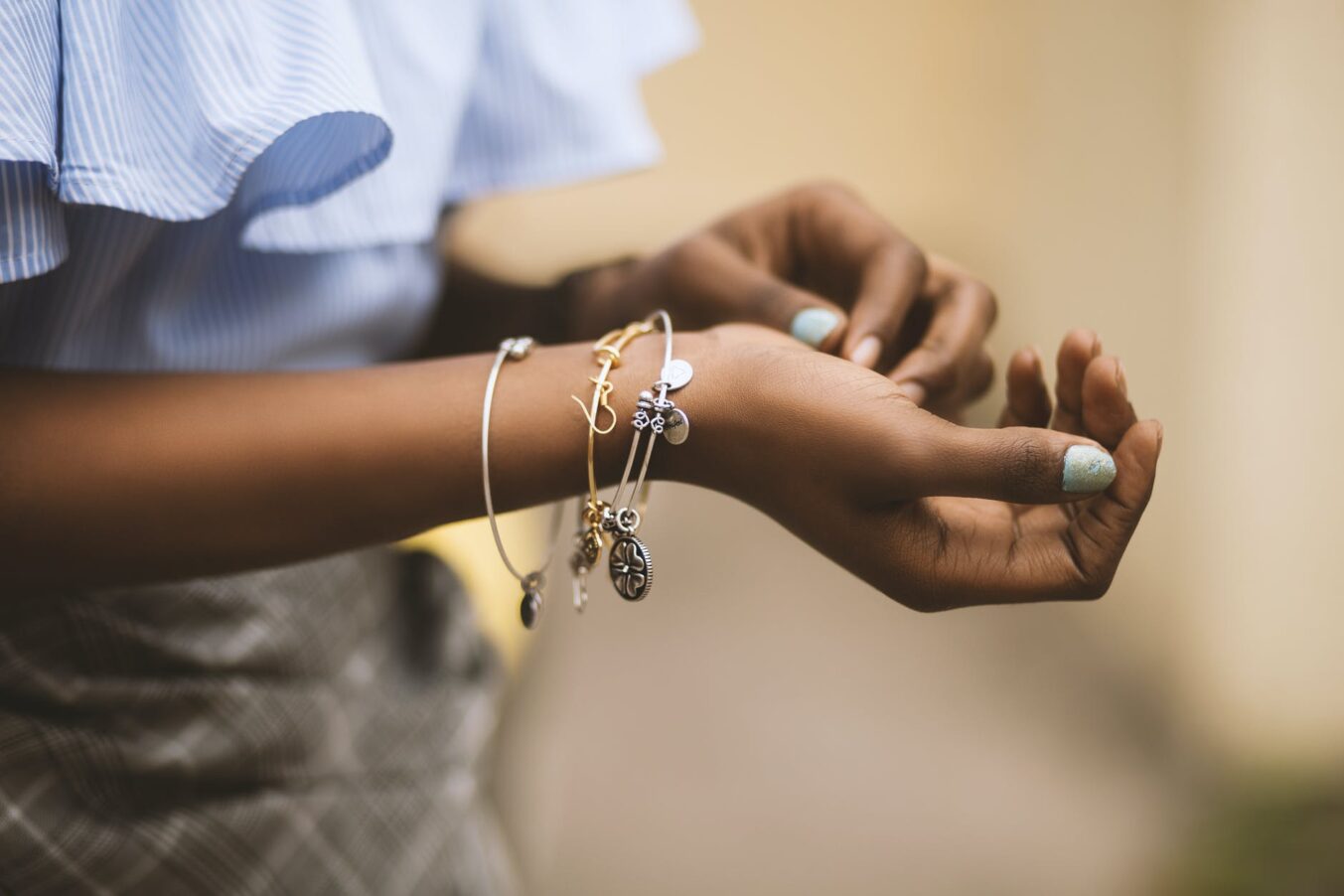Jewellery is used as much more than just a fashion accessory. Ogden (1992) emphasises its rare power to communicate the feelings and beliefs of the people who wear it, and even suggests that as an object surviving the ancient world, it is another piece in the “jigsaw puzzle of history”. Why is it that jewellery has been around for so long, and what does it say about the person wearing it?
As one of the oldest of the decorative arts, jewellery reinforces the power that an individual has (Evans, 1989); it is much more than just a financial investment, but an emotional one too. Jewellery is used as a means to show an individual’s wealth and social status to others (Jaggi & Bahl, 2019). We live in a society where we are obsessed with the brands around us and the need to belong to a certain social status can even lead to addictive relationships with particular luxury brands (Mrad, Majdalani & El Khansa, 2020). The jewellery we wear can speak volumes about our social status, only if we let it.

As well as a statement of wealth, jewellery can also be a statement of personality and for many, a boost of self-esteem. Jewellery is made to make the wearer feel more elegant and attractive as it adds an element to the body for people to admire (Swigelaar, 2016), this is especially the case if the piece of jewellery you’re wearing is personal to you. Jewellery that holds personal value significantly boosts confidence, in comparison to jewellery that has no emotional value. People’s decision to wear this accessory is not just about portraying wealth, but also about expressing one’s self.
Women, in particular, are suggested to buy items that are concerned with appearance and emotional aspects of themselves. Dittmar, Beattle and Friese (1995) explain how products are impulsively bought to reflect self-identity – if a piece of jewellery is symbolic and self-expressive, it is more likely to be bought by the consumer. Following this logic, brands should be creating a more personal experience when it comes to buying jewellery as customers look for items that are suited to them specifically.
Nevertheless, it’s also important to consider the role that culture plays in our decision to wear jewellery. An obvious example of this would be that within Western culture, a band on the left ring finger is a clear sign of availability. However, in comparison to this, the Zulu people (the largest ethnic group in South Africa) use a much more colourful method of revealing a woman’s marital status. Beadwork is used as a means of communication between the sexes, but it can also refer to a woman’s home and family. Although both cultures have a similar purpose, they utilise jewellery in many different ways.
In other cultures, jewellery can be worn as a means of cultural identity. Using the women of the Padaung tribe as an example, they are known for their particularly long necks, caused by wearing gold rings around their necks. Beginning at the age of five, the number of neck rings is increased as the child grows older. This is an important demonstration of the impact of culture as this would not be the norm in many of today’s societies.
There are many different reasons why we choose to buy and wear the jewellery that we do, and it does not necessarily serve the same purpose for everyone. However, the more we can understand about the psychology behind it, the better the decisions we can make in the future.
Recommendations of some interesting jewellery brands:
- Wolf & Moon (@wolfandmoonshop)
- A handcrafted jewellery label inspired by nature, architecture, art and design
- Original statement jewellery for the curious and independent – unique, wearable jewellery, from eye-catching statement pieces to everyday essentials
2. Chalk Jewellery (@chalkjewellery)
- A London based design studio run by architect Malaika – creates unusual, geometric, wearable forms
- Collections are influenced by architectural elements, everyday objects and bold colourful cultural patterns
- All pieces are handmade
3. Lines & Current (@linesandcurrent)
- The theme of the jewellery collection dances between two poles: clean lines and unpredictable flow
- A minimalist approach informs the designs




Great article.
Interesting perspective on how jewelry influences our emotions and identity. I really enjoyed reading this! Thanks for sharing such thought-provoking insights.
Insightful look at why we wear what we wear!